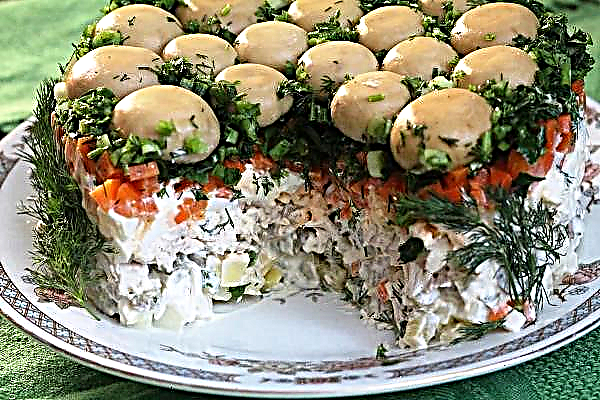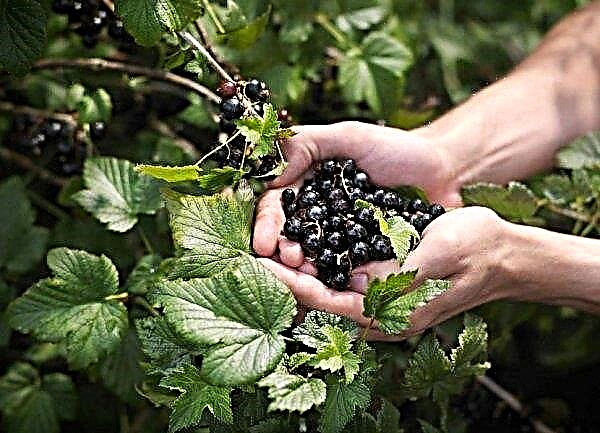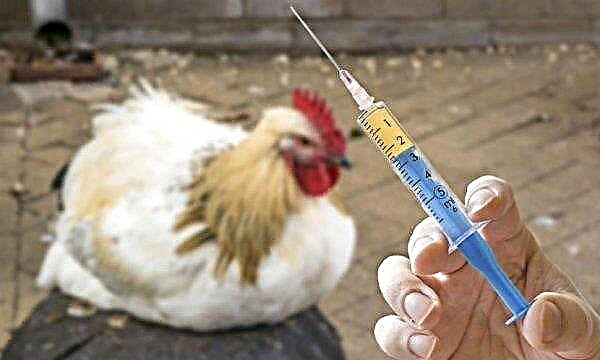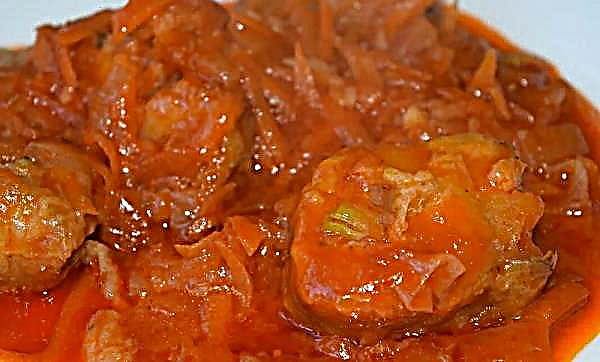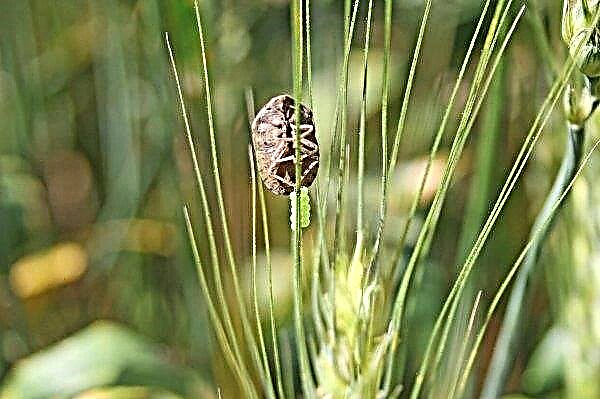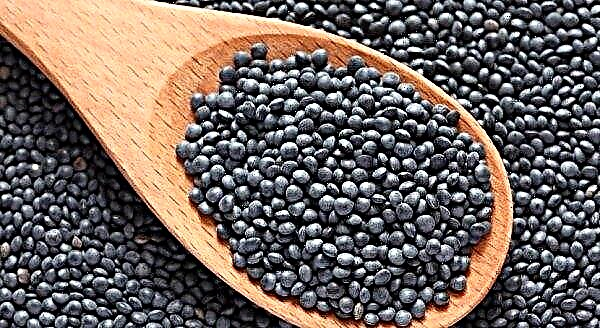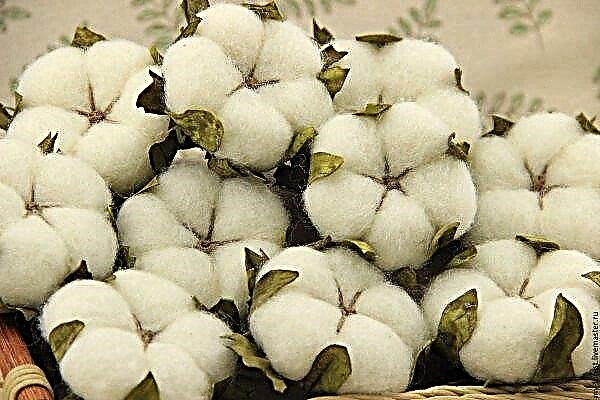Proper preparation of wards for the winter is one of the main secrets of successful beekeeping. About what the beekeeper needs to do in late autumn in order to find a healthy and strong family in the hive in the spring, ready for active production of honey, is described in detail in this review.
Work with bees in November
With the arrival of late autumn, the bees finish preparing for the wintering, which actually lasted all summer. The essence of this work is to provide the family with the most nutritious and concentrated food, which should be enough before the onset of sustainable heat. For convenience and accessibility of food supplies, the family places them in the upper part of the house and preserves them with a wax stopper, through which moisture does not penetrate. This manipulation will protect honey from thickening and unwanted crystallization.
Video: Work with bees in November
In addition to creating food reserves, bees in the autumn period are actively engaged in warming the hive, for which, with the help of propolis, they isolate all cracks and cracks, as well as reduce the size of the holes (entrances to the nest), leaving only a small space for ventilation. Due to such thermal insulation, the family manages to ensure the internal temperature in the “room” at + 6 ° C and above, after which, forming a club, the insects manage to warm the air inside it to unbelievable for an unheated nest + 28 ... + 30 ° C.
Having completed all preparations, the bees noticeably calm down and lose activity. If the days are warm and the autumn sun warms the air during the day to a temperature of + 8 ° C and above, sluggish and drowsy insects can occasionally fly out of the hive, however, the purpose of such walks is not to collect nectar, but to release the intestines, therefore it is far from the "home" the bee does not fly off during this period.
Did you know? During the winter, bees take food no more than once a week, and this is enough for them to maintain strength during a period of reduced activity. Interestingly, the intestine of the insect during this period is not released, and the hive, accordingly, is not contaminated with excrement, since the amount of food eaten exactly corresponds to how much the bee needs for complete assimilation.
Finally, by the end of November or early December, the apiary is completely empty: the family goes for the winter. Nevertheless, it should be noted that precisely by the way the bees behave in November, how restless they are and how often they fly late, one can judge the degree of readiness of the hive for winter and evaluate the work of the beekeeper.
Ways to care for bees
For many beekeepers, care for bees at the end of autumn is associated with warming the hive, but in reality the range of work in the apiary during this period is much more extensive.
In particular, in addition to the above, the farmer is required to:
- to prepare and correctly place winter feeding in the nest;
- conduct preventive treatment of the hive from parasites;
- organize an autumn build-up of bee colonies;
- perform other actions necessary to ensure a quiet wintering for the family (organize laboratory tests for the timely diagnosis and treatment of bacterial and other infections, the development of which can be suspected by observing the behavior of the family or individual individuals, etc.).

Top dressing
Autumn feeding of the bee colony is carried out for different purposes.
In particular, this may be necessary in order to:
- provide the family with adequate nutrition for the whole winter if their own stocks collected by bees may not be enough or these stocks were withdrawn at the time of honey pumping;
- replace low-quality (sour, stiff, crystallized) honey with more suitable for food;
- give insects medicinal or vitamin preparations by adding them to complementary foods.
There are three main types of complementary foods:
- natural honey;
- sugar syrup (usually invert sugar is used, made from granulated sugar and water, taken in a 3: 2 ratio with the addition of a small amount of citric acid);
- kandy - A special mixture of honey and powdered sugar, sometimes with additional nutritional or medicinal additives (aloe or garlic juice, pine tincture, cobalt, cobalamins, etc.), which has the consistency of a viscous dough.
Important! The amount of honey or syrup depends on many factors, but on average it should be assumed that about 2 kg of feed should be put in each frame.
The beekeepers recommend laying honey and sugar syrup in the hive no later than September, so that a deceiving excess of food does not provoke a late brood.
Kandy is very convenient for replenishing winter food supplies. For this purpose, it can be placed under the stands at the end of autumn, or, as some beekeepers do, who have the ability to constantly monitor the condition of the wintering family, immediately when additional food is necessary, that is, in mid-winter or later. A cake is laid by wrapping it with a plastic film to form condensation and leaving a small space for ventilation and access of insects to the feed.
Practice shows that it is in the second half of wintering that, as depleted stocks and brood appear, the bee family rises to the upper level of the frame and begins to process candies. Thus, the early laying of candi in the upper part of the frame using plastic packaging provides insects at the end of winter not only with food, but also with the necessary moisture, and also improves air exchange in the hive.
Processing beehives and bees from diseases and parasites
The next important stage of the November work of the beekeeper is the preventive treatment of the hive. Its goal is to prevent bee infestation by ticks, fungal, bacterial and viral infections.
Did you know? Mankind uses bees not only for honey, propolis and royal jelly. It turns out that after a certain training, these insects are able to signal the detection of explosives, which they determine by smell, which has long and successfully been used by the US Department of Defense in conducting some military operations.
One of the most common problems known to every beekeeper is varroatosis. A dangerous infectious disease is caused by the tick of Varroa-Jacobsoni. If timely measures are not taken, the parasite can provoke an epidemic that lasts for years and affects all, without exception, individuals in the family.
Among acaricidal drugs that are highly effective for the treatment and prevention of varroatosis, the following trade names should be mentioned:
- Aqua Flo;
- Amitraz;
- "Assigned";
- Apitak
- Bivarool;
- Bisanar
- "Bipin";
- "Bromopropylate";
- "Warropol";
- Neoron
- "Polysan";
- "Fluvalinate";
- "Fumisan."
The medicine is diluted in accordance with the instructions (for example, “Bipin” is used in a concentration of 1 ampoule of the drug per 1 liter of water), is drawn into a syringe or plastic bottle with a spray bottle and the space between the frames in the hive is carefully treated with a working solution. Some products (the same “Bipin”) can be used with a smoke gun, others (for example, “Polysan”) are available in the form of aerosols, which simplifies the work of the beekeeper.
Important! Varroa-Jacobsoni has the ability to quickly adapt to the action of acaricides, so when processing hives, medicines should be alternated as often as possible, carefully making sure that not only the brand name, but also the active substance changes (for example, “Bipin”, “Aquitak”, “Aqua Flo” and “Amitraz” are, in fact, different names for the same medicine).
Among the most common fungal infections that infect bee colonies, ascospherosis, which can kill up to 70% of young individuals, is usually called first. The development of Askofer apis fungus, the causative agent of the disease, is largely facilitated by weak family immunity, high humidity in the hive and violation of sanitary standards when keeping bees. At the first sign of infection, before the hive leaves for the winter, it must be treated with a reliable fungicidal preparation.
Examples of such tools include:
- "Askovet";
- Asconazole;
- Mikoask
- "Mykozol";
- "Nystatin."
Viral infections, as you know, are usually not treated with medications, but prevention of their development is quite possible. One of the most common diseases of this category is saccular brood (it is also dry rotten or sacculent).
The virus is very often spread by various parasites, including ticks, so beekeepers use acaricides at the same time sometimes they treat the hive with such antiviral drugs, such as:
- "Antivir";
- "Virusan."
In addition to the prophylaxis of saccular brood, these agents have a general strengthening effect on bees and prevent the development of some bacterial infections, in particular, nosematosis.
Warming the hive before winter
Modern multi-tiered beehives, the so-called bee pavilions, already at the manufacturing stage provide for serious thermal insulation, usually consisting of a thick layer of foam laid between the walls of the housing. Such structures are able to withstand quite severe winters without additional warming, such as, for example, in the middle zone of the European part of Russia, Bashkiria and other regions with a temperate continental climate.
However, ordinary frame hives before leaving for the winter need careful protection. There are various methods for this, the choice of the most suitable is primarily determined by the climatic zone.
So, for example, in Siberia, the best way to winter the bees is to place the hives in the so-called Omshanik - a specially equipped basement or semi-basement type room, where throughout the winter the temperature never drops below -2 ° C, but basically remains within + 2 ... + 5 ° C.In addition to critically low temperatures, especially accompanied by strong winds, wintering in Omshanik is considered the preferred option for those regions where the weather is unstable in winter and is characterized by very sharp daily differences (for example, at night the temperature drops to -25 ° C, and in the daytime when the sun warms up, rises to zero).
In areas of a milder and more stable climate, bees can remain open-air throughout the winter, and in this case, the hives both on the outside and on the inside must be seriously insulated.
The standard way to insulate the hive from the outside is to cover them with plywood or wooden shields, but not tightly, so that there is free space between the shield and the wall. A foam pad or pillow made of wood shavings, needles, nutshells, or fallen leaves is placed in this cavity to further retain heat.
Straw can also be used as a gasket, but in this case, the material must first be wrapped with a metal mesh so that the mouse does not climb into it. When plating the hive, it should be remembered that there should be sufficient space near the letoks to ensure adequate ventilation inside.
Natural materials, for example, dried in the sun, are best suited for the walls of the hive from the inside:
- walnut leaves;
- reeds;
- cattail (another species of tall marsh grass, very similar to reeds);
- moss;
- coniferous paws.
It is most convenient to pre-prepare a suitable pillow size by stitching them from a canvas, burlap or other natural fabric and densely stuffing with such a heater.Important! There is no need to clean the wax growths applied by bees on the frame bars. These irregularities create natural passages that the insects use when necessary to move to feed reserves.
An important stage in warming the hive for the winter is replacing the covers that cover the frame. For this purpose, you can use burlap, which allows air to pass through well, although some beekeepers, on the contrary, cover the frame with a dense plastic film for the winter, because the condensate, which will inevitably collect on its surface, will be very useful for the family by the beginning of spring when the brood appears. In addition, the film helps to retain heat inside the hive. Breathable materials, such as burlap, justify themselves in those regions where winter temperatures rarely drop below zero.

Why do bees crumble in November
There can be many reasons for the mass death of bees at the beginning of wintering.
In particular, the following adverse factors can provoke such a problem:
- Damp in Omshanik.
- Excessive insulation of the hivecausing an increased temperature inside it (the so-called suffocation).
- Lack of moisture - condensate accumulating on the frame and necessary for bees to drink and to dissolve thickened honey or sugar cakes.
- Diseases and parasitesin particular the above-mentioned ticks, bacteria, viruses, fungal infections.
- Poisoned feed. Unfortunately, this problem arises more and more often due to the uncontrolled use of pesticides for processing fields where honey plants grow.
- Starvation or poor quality food. Sugar syrup, which many beekeepers use to save the bee colonies for economic reasons, is not a natural food for insects, which means it negatively affects their health and immunity. A less relevant, but still present problem is the lack of a sufficient variety of honey plants during the collection of pollen and nectar. Polyfleur honey contains more nutrients necessary for bees than monoflore honey, respectively, the use of such food makes the family stronger.
- Abuse of antibiotics in keeping bees. Preparations against bacterial diseases should ideally not be used for prophylactic purposes, but in practice this rule is widely violated. The prevention of infections in the first place should be carried out by observing sanitary rules and norms, then the bee colonies will always be healthy and strong, which is a necessary condition for a successful wintering.
- Incorrect breeding work, in particular inbreeding - mating closely related individuals. This phenomenon also leads to the gradual degeneration of the family and explains the massive death of bees.
Did you know? It turns out that a bee fumigated with smoke does not sting because it cannot do this physically: having sensed the danger of a fire, the insect pumps its goiter with honey in order to have food supplies in case of “emergency evacuation”. The overflow of the esophagus does not allow such an individual to bend sufficiently to take advantage of the sting.
Not all factors mentioned above depend on the will of the beekeeper, and yet To prevent the loss of the bee colony or to minimize this risk, it is necessary:
- regularly inspect the state of bees, ruthlessly remove old, deformed and oversaturated honeycombs from the hive, as well as individuals affected by the disease (the latter must be transplanted into new nests, and the uterus must be replaced);
- when warming the hive for the winter, prevent it from overheating, ensure good ventilation and the accumulation of dew (condensate) inside;
- acquire high-quality breeding material or exchange uterus with other beekeepers;
- if possible, use wandering during the period of honey collection;
- closely monitor announcements of upcoming chemical processing of fields and prevent bees from flying to the honey collection during this period;
- provide the family with quality supplementary feeding during the winter;
- do not use antibiotics without direct necessity (for the treatment of a specific disease);
- carry out regular disinfection of nests and work equipment.
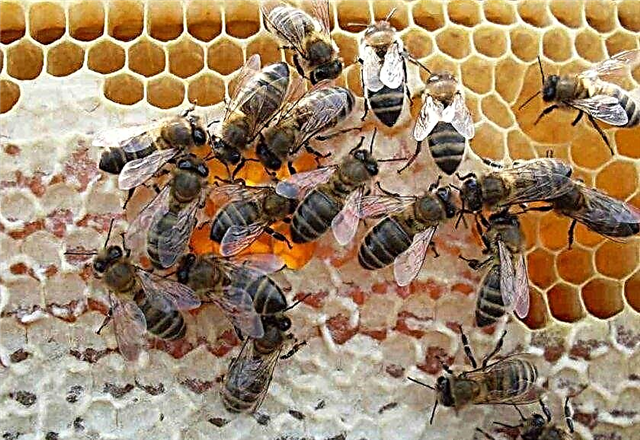
Tips from experienced beekeepers
In order for the bee wintering to be successful, experienced beekeepers recommend following these rules:
- Do not close the hive for wintering ahead of time. As long as the likelihood of warming persists, bees need to leave the opportunity to make the last fall flyby.
- For wintering, only dark brown cells should be left. The dark color indicates that the honeycomb is old and contaminated (honey will roam in it, in addition, it can be a source of dangerous infections), and light bees try not to populate, because it is much colder in them.
- When warming the hive, lettok try to leave the center of the nest, as the club will form immediately in front of the hole.
- To make it easier for the bee colony to bear stress, it is best to remove the hives in Omshanik in the morning and after they are delivered to the wintering place, they should not be moved from place to place. When forming shelves, the strongest families are placed in the lower part, and the weakest are placed in the upper row.
- After transportation, the flylets do not open immediately, but only after the bees inside completely calm down. A signal to this may be silence that has come inside the hive and has replaced the nervous rumble. Sometimes for a full return to normal, the bee family requires 2-3 days.
- During wintering of bees in the open air, both upper and lower letok should be open. In Omshanik, during the first half of wintering, only the upper summers are left open, and at the end of winter, on the contrary, the upper ones are closed and the lower ones are opened.
- The winter hut must be equipped so that the hives are always in the dark. To monitor the condition of the bee colony, you always need to use a red lamp, this will protect insects from stress.
- To further disinfect and prevent waterlogging on the pallet and substrates during the preparation of the hive for winter, it is useful to put fabric bags with a small amount of charcoal, and tighten the ventilation holes with a grill so that rodents do not get inside.
- When forming families, one should not try to strengthen the weak due to the stronger, this leads to the opposite effect. The strong are always combined with the strong, and the weak with the weak.





